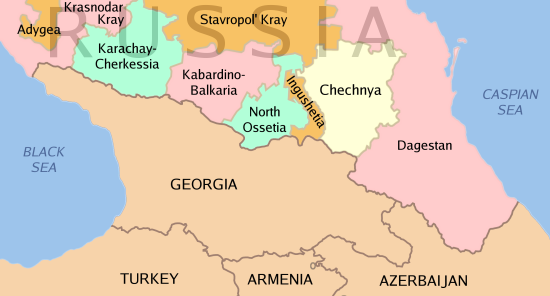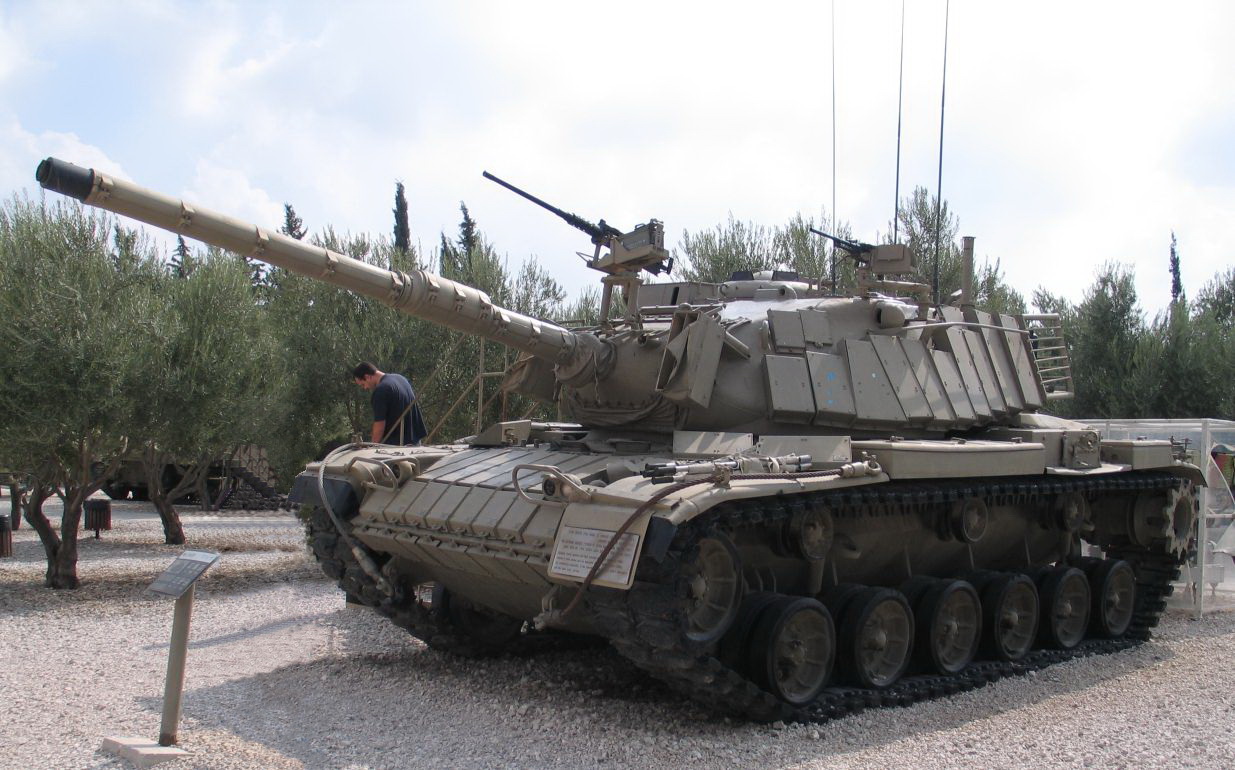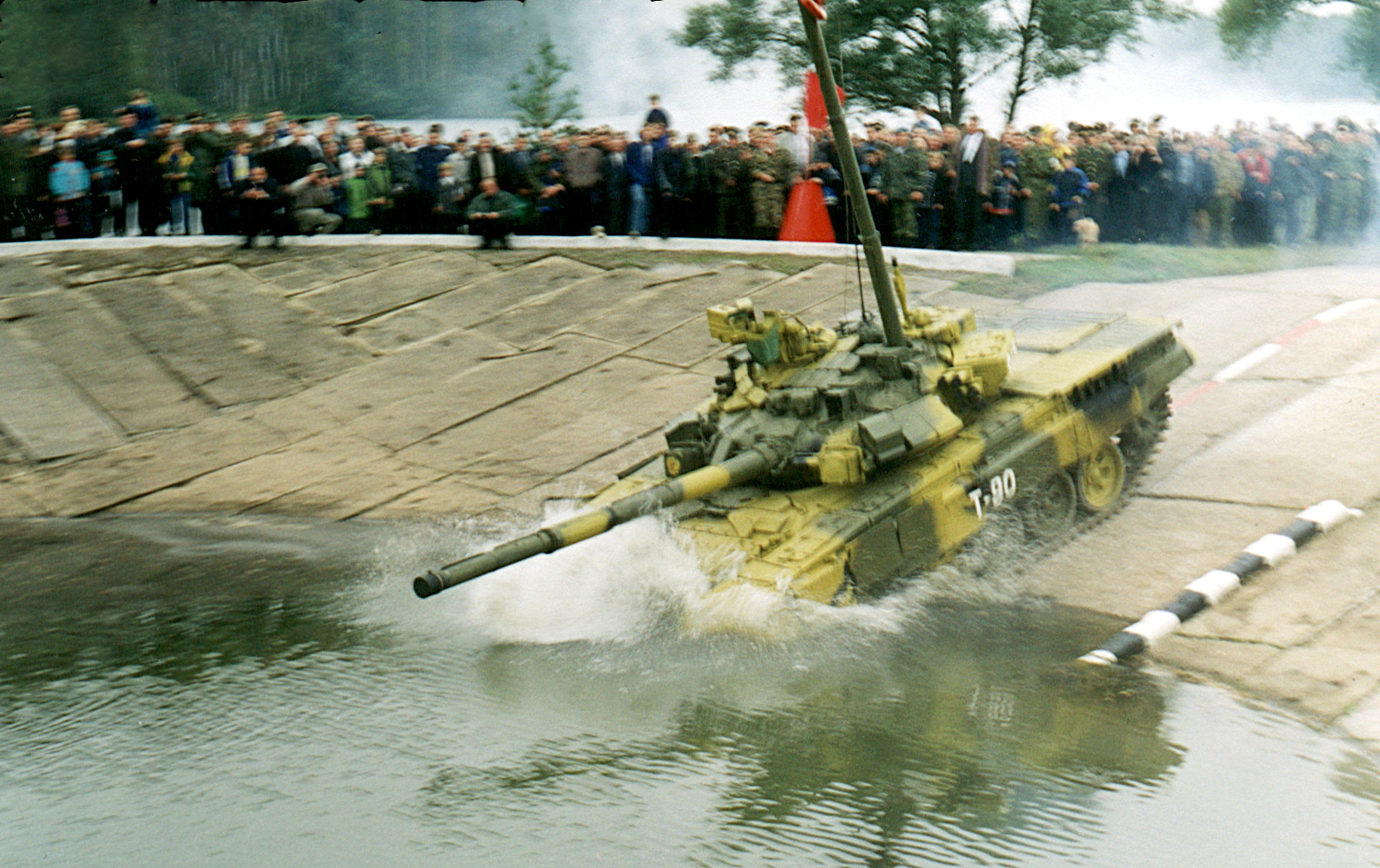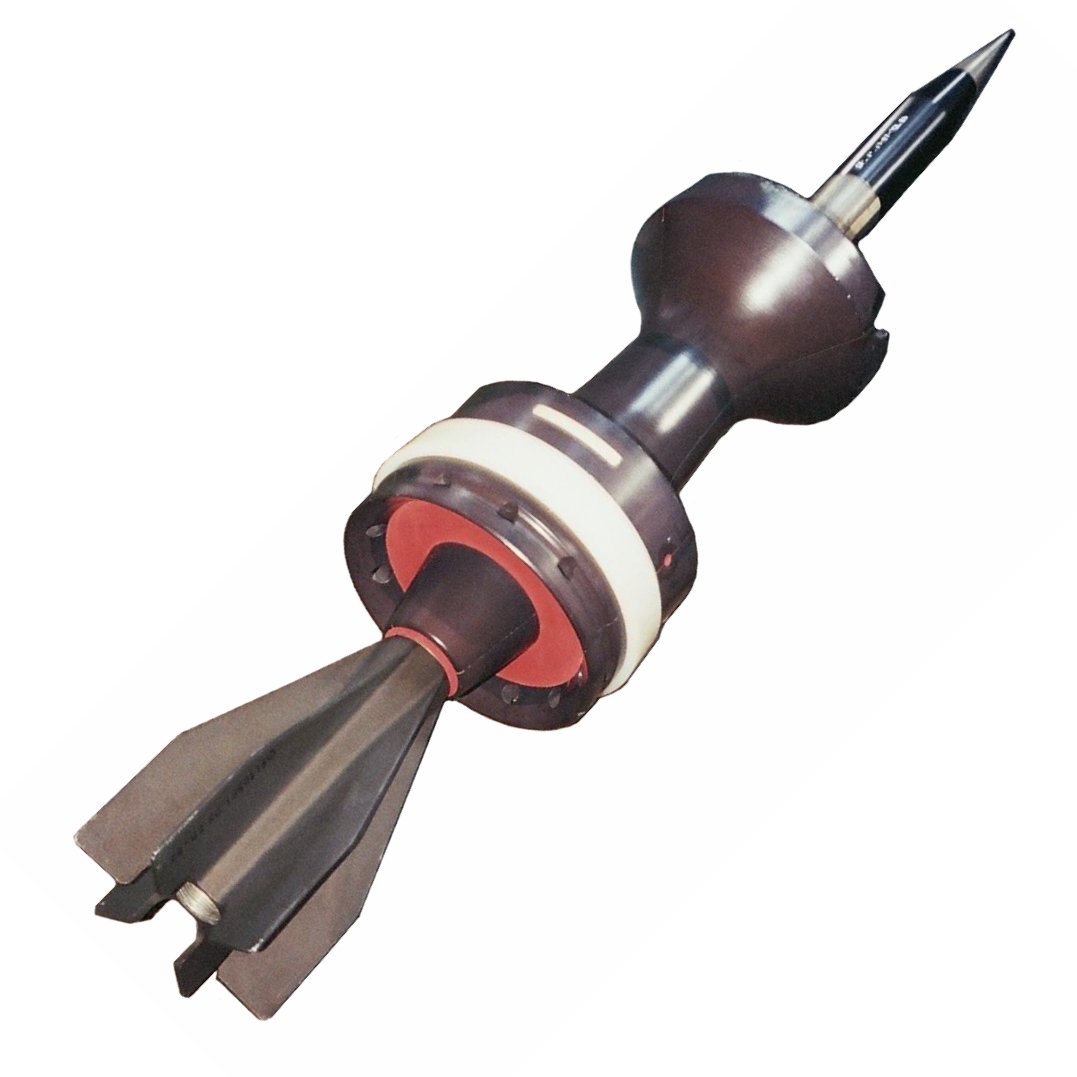|
Combination K
Combination K is a type of composite armor. It is fitted onto the Soviet Union tank T-64. Description Combination K is a three-layer composite armor consisting of an outer and inner layer of steel and a middle layer of fiberglass glass-reinforced plastic ("steklotekstolit") and a pack of ceramic (allegedly corundum) plates. Some T-72 tanks have their gun turret frontal armour composed of three layers: outer and inner layers of steel and a middle layer of sand or quartz ("kvartz", probably the origin of the "K" in the name; also implies some relationship between the T-64A and the kvartz composite). The gun turrets are cast with internal cavities on each side of the main tank gun, which are later filled with the desired composite material. Some Russian sources describe the material as "peschannye sterzhni" ("sand rods" or more likely "sandbars"), likely made of a form of silica similar to fused silica developed in the US for the T95 Medium Tank prototype in the 1952 program for eq ... [...More Info...] [...Related Items...] OR: [Wikipedia] [Google] [Baidu] |
T64 21
The T-64 is a Soviet tank manufactured in Kharkiv, and designed by Kharkiv Morozov Machine Building Design Bureau. The tank was introduced in the early 1960s. It was a more advanced counterpart to the T-62: the T-64 served in tank divisions, while the T-62 supported infantry in motorized rifle divisions. It introduced a number of advanced features including composite armour, a compact engine and transmission, and a smoothbore 125-mm gun equipped with an autoloader to allow the crew to be reduced to three so the tank could be smaller and lighter. In spite of being armed and armoured like a heavy tank, the T-64 weighed only . Soviet military planners considered the T-64 the first of the third-generation tanks and the first main battle tank. These features made the T-64 expensive to build, significantly more so than previous generations of Soviet tanks. This was especially true of the powerpack, which was time-consuming to build and cost twice as much as more conventional de ... [...More Info...] [...Related Items...] OR: [Wikipedia] [Google] [Baidu] |
Composite Material
A composite material (also called a composition material or shortened to composite, which is the common name) is a material which is produced from two or more constituent materials. These constituent materials have notably dissimilar chemical or physical properties and are merged to create a material with properties unlike the individual elements. Within the finished structure, the individual elements remain separate and distinct, distinguishing composites from mixtures and solid solutions. Typical Materials, engineered composite materials include: *Reinforced concrete and masonry *Composite wood such as plywood *Reinforced plastics, such as fibre-reinforced polymer or fiberglass *Ceramic matrix composites (composite armor, composite ceramic and metal matrices) *Metal matrix composites *and other Advanced composite materials (engineering), advanced composite materials There are various reasons where new material can be favoured. Typical examples include materials which are less ex ... [...More Info...] [...Related Items...] OR: [Wikipedia] [Google] [Baidu] |
Second Chechen War
The Second Chechen War (russian: Втора́я чече́нская война́, ) took place in Chechnya and the border regions of the North Caucasus between the Russian Federation and the Chechen Republic of Ichkeria, from August 1999 to April 2009. In August 1999, Islamist fighters from Chechnya infiltrated Russia's Dagestan region, violating Russia's borders. During the initial campaign, Russian military and pro-Russian Chechen paramilitary forces faced Chechen separatists in open combat and seized the Chechen capital Grozny after a winter siege that lasted from December 1999 until February 2000. Russia established direct rule over Chechnya in May 2000 although Chechen militant resistance throughout the North Caucasus region continued to inflict heavy Russian casualties and challenge Russian political control over Chechnya for several years. Both sides carried out attacks against civilians. These attacks drew international condemnation. In mid-2000, the Russian g ... [...More Info...] [...Related Items...] OR: [Wikipedia] [Google] [Baidu] |
Reactive Armour
Reactive armour is a type of vehicle armour that reacts in some way to the impact of a weapon to reduce the damage done to the vehicle being protected. It is most effective in protecting against shaped charges and specially hardened kinetic energy penetrators. The most common type is ''explosive reactive armour'' (ERA), but variants include ''self-limiting explosive reactive armour'' (SLERA), ''non-energetic reactive armour'' (NERA), '' non-explosive reactive armour'' (NxRA), and electric armour. NERA and NxRA modules can withstand multiple hits, unlike ERA and SLERA. A second hit in exactly the same location may potentially penetrate any of those, as the armour in that spot is compromised. Reactive armour is intended to counteract anti-tank munitions that work by piercing the armour and then either kill the crew inside, disable vital mechanical systems, or create spalling that disables the crew — or all three. Reactive armour can be defeated with multiple hits in the same ... [...More Info...] [...Related Items...] OR: [Wikipedia] [Google] [Baidu] |
Object 187
Object 187 (Объект 187), was a Soviet experimental main battle tank developed between the late 1980s and middle 1990s. It remains a relatively unpublicized development because of high levels of secrecy surrounding the project. Design The tank was fitted with cutting-edge systems and structural solutions, losing many of the traditional shortcomings of Soviet tanks. Originally the design was intended to be only a temporary solution before the development of new combat platforms. ''Obiekt 187'' was a parallel project to Obiekt 188, the T-90 tank. It was based on the T-72B, with a heavily modified turret. A particularly notable feature was the rejection of the T-64 hull design. The redesigned layout took up more space, but positively affected ergonomics and protection from the glacis plate. Due to lengthening of the hull's nose section, the driver's position was lower, with his optics attached to the roof of the hull, unlike in the T-64 and its derivatives. This remedied a notoriou ... [...More Info...] [...Related Items...] OR: [Wikipedia] [Google] [Baidu] |
T-90
The T-90 is a third-generation Russian main battle tank. It uses a 125mm 2A46 smoothbore main gun, the 1A45T fire-control system, an upgraded engine, and gunner's thermal sight. Standard protective measures include a blend of steel and composite armour, smoke grenade dischargers, Kontakt-5 explosive reactive armour (ERA) and the Shtora infrared anti-tank guided missile (ATGM) jamming system. The T-90 was designed and built by Uralvagonzavod, in Nizhny Tagil, Russia. It entered service with the Russian Army in 1992. Development The T-90 has its origins in a Soviet-era program aimed at developing a single replacement for the T-64, T-72 and T-80 series of main battle tanks. The T-72 platform was selected as the basis for the new generation of tank owing to its cost-effectiveness, simplicity and automotive qualities. The Kartsev-Venediktov Design Bureau from Nizhny Tagil was responsible for the design work and prepared two parallel proposals—the ''Object 188'', whic ... [...More Info...] [...Related Items...] OR: [Wikipedia] [Google] [Baidu] |
T-80
The T-80 is a main battle tank (MBT) that was designed and manufactured in the former Soviet Union and manufactured in Russia. The T-80 is based on the T-64, while incorporating features from the later T-72. The chief designer of the T-80 was Soviet engineer Nikolay Popov. When it entered service in 1976, it was the second MBT in the world to be equipped with a gas turbine engine, after the Swedish Stridsvagn 103, and the first to use it as a main propulsion engine. The T-80U was last produced in 2001 in a factory in Omsk, Russia. The Ukrainian T-80UD diesel engine variant continued to be produced in Ukraine. The T-80 and its variants are in service in Belarus, Cyprus, Egypt, Kazakhstan, Pakistan, Russia, South Korea, Ukraine and Uzbekistan. Ukraine further developed the T-80UD as the T-84. History Development The project to build the first Soviet turbine powered tank began in 1949. Its designer was A. Ch. Starostienko, who worked at the Leningrad Kirov Plant (LKZ). T ... [...More Info...] [...Related Items...] OR: [Wikipedia] [Google] [Baidu] |
Kinetic Energy Penetrator
A kinetic energy penetrator (KEP), also known as long-rod penetrator (LRP), is a type of ammunition designed to penetrate vehicle armour using a flechette-like, high-sectional density projectile. Like a bullet or kinetic energy weapon, this type of ammunition does not contain explosive payloads and uses purely kinetic energy to penetrate the target. Modern KEP munitions are typically of the armour-piercing fin-stabilized discarding sabot (APFSDS) type. History Early cannons fired kinetic energy ammunition, initially consisting of heavy balls of worked stone and later of dense metals. From the beginning, combining high muzzle energy with projectile weight and hardness have been the foremost factors in the design of such weapons. Similarly, the foremost purpose of such weapons has generally been to defeat protective shells of armored vehicles or other defensive structures, whether it is stone walls, sailship timbers, or modern tank armour. Kinetic energy ammunition, in its ... [...More Info...] [...Related Items...] OR: [Wikipedia] [Google] [Baidu] |
High-explosive Anti-tank
High-explosive anti-tank (HEAT) is the effect of a shaped charge explosive that uses the Munroe effect to penetrate heavy armor. The warhead functions by having an explosive charge collapse a metal liner inside the warhead into a high-velocity explosively formed penetrator (EFP) jet; this is capable of penetrating armor steel to a depth of seven or more times the diameter of the charge (charge diameters, CD). The EFPs jet effect is purely kinetic in nature; the round has no explosive or incendiary effect on the target. Because they rely on the kinetic energy of the EFP jet for their penetration performance, HEAT warheads do not have to be delivered with high velocity, as an armor-piercing round does. Thus they generate less recoil. The performance of HEAT weapons has nothing to do with thermal effects, with HEAT being simply an acronym. History HEAT warheads were developed during World War II, from extensive research and development into shaped charge warheads. Shaped c ... [...More Info...] [...Related Items...] OR: [Wikipedia] [Google] [Baidu] |
Shaped Charge
A shaped charge is an explosive charge shaped to form an explosively formed penetrator (EFP) to focus the effect of the explosive's energy. Different types of shaped charges are used for various purposes such as cutting and forming metal, initiating nuclear weapons, penetrating armor, or perforating wells in the oil and gas industry. A typical modern shaped charge, with a metal liner on the charge cavity, can penetrate armor steel to a depth of seven or more times the diameter of the charge (charge diameters, CD), though greater depths of 10 CD and above have been achieved. Contrary to a misconception (possibly resulting from the acronym for '' high-explosive anti-tank'', HEAT) the shaped charge EFP jet does not depend in any way on heating or melting for its effectiveness; that is, the EFP jet from a shaped charge does not melt its way through armor, as its effect is purely kinetic in nature – however the process does create significant heat and often has a signific ... [...More Info...] [...Related Items...] OR: [Wikipedia] [Google] [Baidu] |
Fused Silica
Fused quartz, fused silica or quartz glass is a glass consisting of almost pure silica (silicon dioxide, SiO2) in amorphous (non-crystalline) form. This differs from all other commercial glasses in which other ingredients are added which change the glasses' optical and physical properties, such as lowering the melt temperature. Fused quartz, therefore, has high working and melting temperatures, making it less desirable for most common applications. The terms fused quartz and fused silica are used interchangeably, but can refer to different manufacturing techniques, as noted below, resulting in different trace impurities. However fused quartz, being in the glassy state, has quite different physical properties compared to crystalline quartz. Due to its physical properties it finds specialty uses in semiconductor fabrication and laboratory equipment, for instance. Compared to other common glasses, the optical transmission of pure silica extends well into the ultraviolet and infra ... [...More Info...] [...Related Items...] OR: [Wikipedia] [Google] [Baidu] |
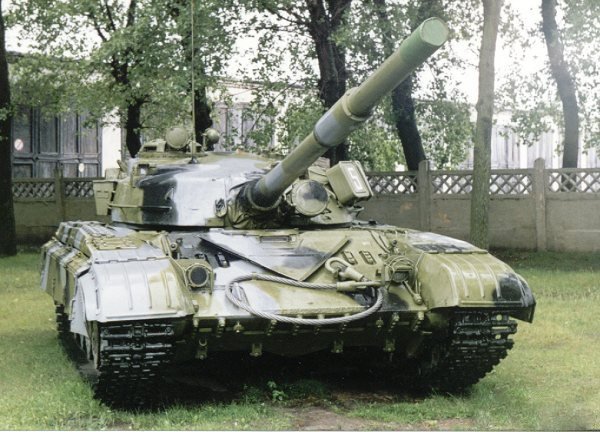
.jpg)

